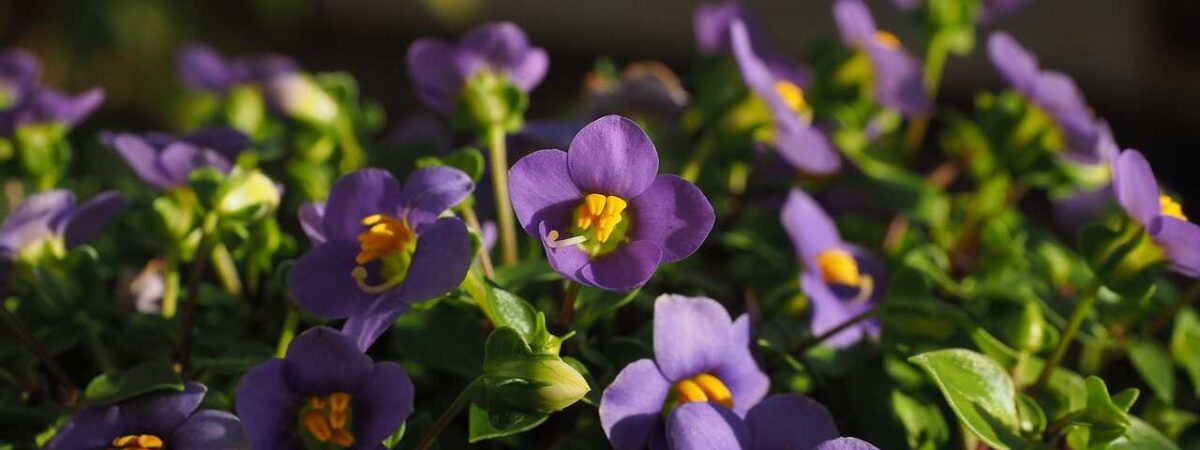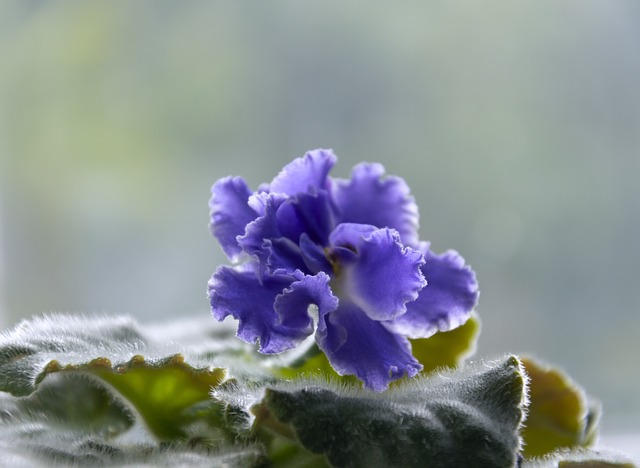
Flowering plants are the showstoppers of every garden. And so is the case with beautiful African Violets.
African violet is a beautiful, tiny, compact, and popular houseplant that bears a bunch of blue, white, or purple flowers along with fuzzy leaves. All they require to grow is a little extra attention on your part in the right conditions, and they will provide you with bloom all year round.
This writing piece talks about the effective way to grow and care for these beautiful blossoms and vibrant foliage of African Violets.
So let’s dive into the article below to find out more about African violets.
Plant Overview
As the name suggests African violets, these beauties are native to East Africa and originated from the tropical rainforests of Tanzania and Kenya.
The African Violets belong to the genus which is popularly recognized as Saintpaulia, though this plant has recently been re-categorized again into a different genus, Streptocarpus. Despite their common name as violets, these plants are not a type of violet. However, they can produce vivid, violet-colored flowers.
Types of African violets
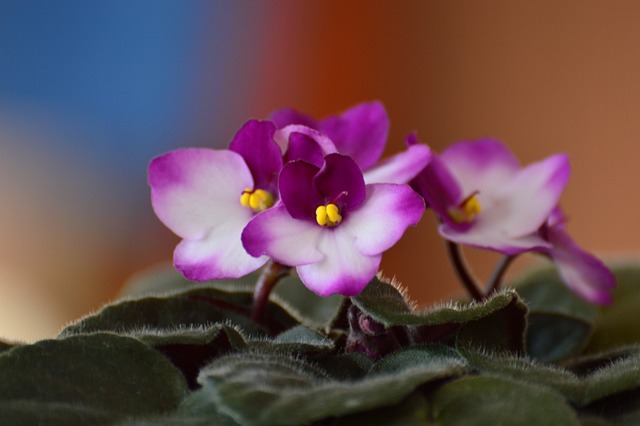
There are a lot of varieties of African violets available throughout the world. These are given below.
Persian Prince
It is a miniature-sized flowering plant that showcases scalloped medium green leaves and beautiful semidouble dark purple flowers.
Lyon’s Lavender Magic
This popular variety of African violets is a standard-size plant with medium green foliage and bears white with light purple colored star-shaped flowers. Those flowers can be single or semi-double and frilled.
Hawaiian Pearl
It is also a standard-size plant that bears dark green foliage and showcases a semi-double star shape flower which is ivory along with a dark lavender/rose band.
Summer Twilight
Summer twilight is a flowering plant that bears variegated leaves along with frilled lilac-purple flowers with a white-edged border.
Lonestar Snowstorm
Lonestar snowstorm is a flowering plant that has variegated leaves with single white-frilled flowers.
Little Maya
Little Maya is one of the popular variants of African violets that has dark green foliage with deep crimson red flowers.
How to grow African violets?
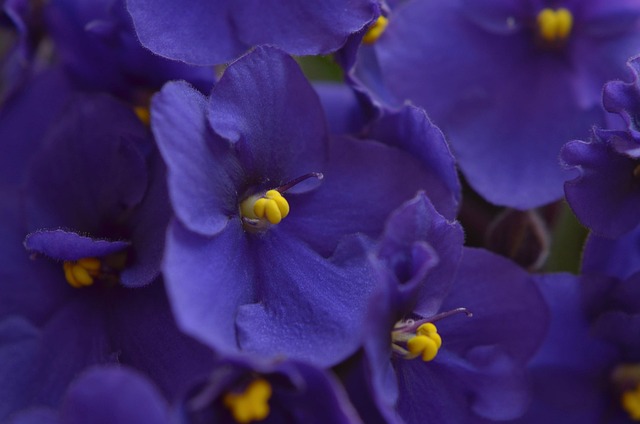
African violets are one of the strictly indoor plants largely found in North America because their leaves need to stay dry.
If you are planning to grow African violets in your garden, it is suggested to grow them in bright, indirect light for the best color and beautiful blooms. The ideal location for this plant is three feet away from a west- or south-facing window.
However, plants will still grow if they are situated right beside north- or east-facing windows, but this plant showcase the leaves that will be thin and spindly, and they are less likely to bloom.
If you don’t find a good spot near any window, you can grow your African violets under 40-watt fluorescent lights, or else you can grow lights hanging 12 to 15 inches above the plant.
How to care for African violets?

Growing African violets at home or in your garden is quite easy, but they require a proper growing medium, the right kind of nutrients, and the environment to thrive.
But as long as they are provided with everything they need to thrive, they will bloom their beautiful purple flowers all year round, which brings a bit of summer to your home even on colder days.
Light
African violets thrive well in bright but indirect sunlight. If growing indoors, they can commonly be grown under fluorescent lights which are placed 12 to 15 inches above the leaves.
If the leaves of your plant start getting light green, that means it is getting too much light, whereas thin and dark green leaves or a leggy plant are a clear indication of too little light.
Soil
African violets grow best in a well-drained potting mix. But that water should have a good drainage system. Poorly drained soil may cause root rot, in which this plant becomes waterlogged and the leaves of the plant begin to fall.
So make sure that your African violets plant is never allowed to be exposed to standing water for a longer period of time.1
Water
It is recommended to keep the soil moist where you are growing African violets with warm water and strive for high humidity.
Do not allow water to have contact with the leaves of the plant to prevent damage, other than light misting. Try to water your plant from below, or push the water spout into the soil while watering. Don’t allow your plant to sit in water for an extended period of time.
Temperature and Humidity
African violets like warm and humid conditions to grow and they thrive at 70 degrees Fahrenheit. So don’t allow the temperature of your place to fall below about 60 degrees Fahrenheit and try to give your best to keep these plants away from any drafts in the home.
Fertilizer
Feed your plants with an African violet fertilizer every other week throughout the spring and summer. For the amount to use, follow the product label directions and instructions.
How to repot African violets?
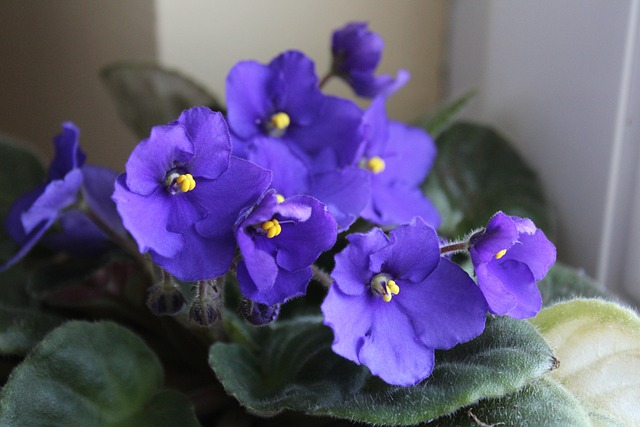
As the lower leaves on an African violet plant tend to die back easily, the lower portion of the stem may look bare. This bare lower portion is sometimes referred to as a neck.
If your plant is facing the same issue, remove the plant from the pot where you are growing it, cut off the bottom of the root ball, and simply repot your plant in the same container with some essential Potting Mix, by burying the stem so that the lower part of leaves will become even with the edge of the pot.
Then place your African violets plant in a spot that has high humidity or cover it with a plastic bag temporarily for a week after planting. It helps in lessening the shock that your plant may get after part of the root ball is removed.
Apart from that, you can simply repot your plant by simply grabbing it as a whole, lifting it, and then replacing it with a larger container. But make sure not to damage their root systems during this process.
It is required to plant your African violets up to where they were originally planted and try not to cover the crown of the plant.
How to propagate your African Violets?
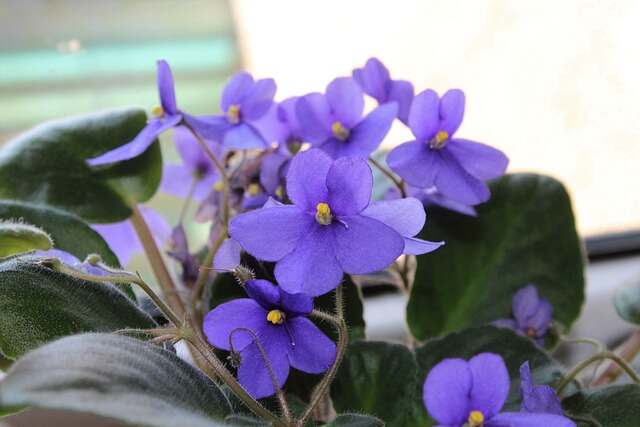
African violets can be easily propagated through leaf cuttings. To propagate your plant, choose a firm, healthy leaf and cut it off with a sharp knife. Leave 1 to 1½ inches of the leaf stem which is attached to the leaf blade.
Fill a pot where you want to grow your new plant with a moistened 50:50 mix of vermiculite and coarse sand. Insert the leaf stem or petiole of each leaf cutting into the rooting medium with an angle of 45 degrees.
Then, it is suggested to firm the rooting medium around the petiole of each leaf cutting.
After all of your cuttings have been inserted, water those rooting mediums and allow them to drain for a few minutes. Next, cover your plant cuttings with a clear plastic bag. Secure these plastic bags with the pot with the help of tape or a rubber band.
The enclosed environment of these African violets will drastically reduce the loss of water from the leaf cuttings and help to prevent them from wilting and dying before they have any chance to root.
Then Set your pot in a brightly lit location as mentioned above. The roots of the plant will start to form within three to four weeks of planting. The leaves of new plants will start to appear in six to eight weeks.
A lot of plants are usually formed at the base of each petiole. You can separate these plants simply by pulling or cutting them apart. Then pot up your new plants individually into a new container in the well-drained potting mix.
Conclusion

As you read this article this far, you might have known the growing and caring guide for African Violets.
So grow these beautiful flowering plants in your garden and add a new beauty and vibrant colors to your yard.
You may also like to read
How to grow and care for red valerian? – A complete guide
How to grow and care for rocky mountain juniper – An effective guide

